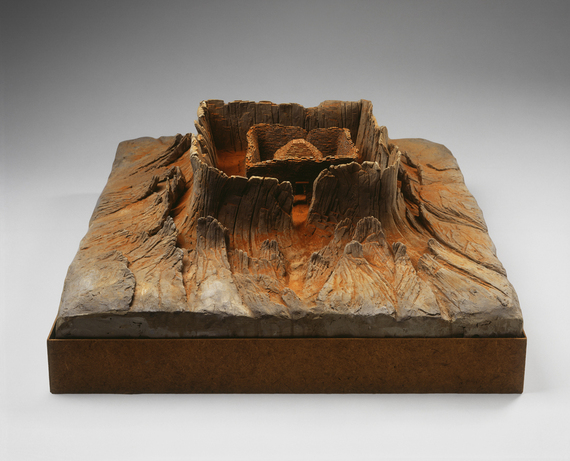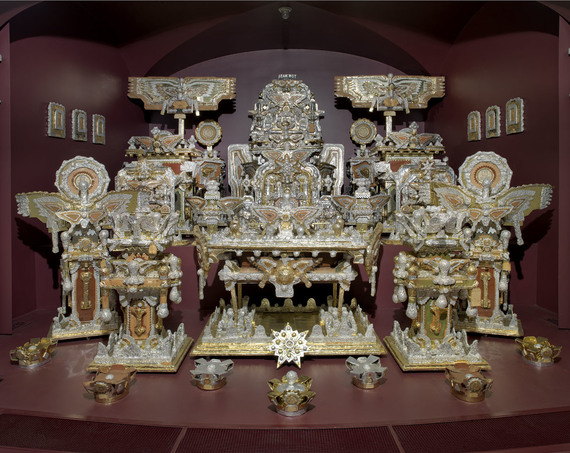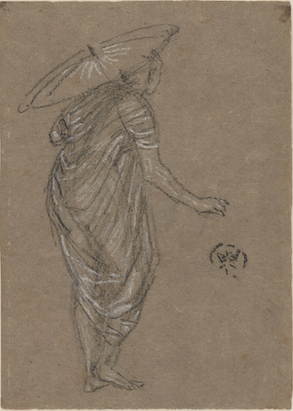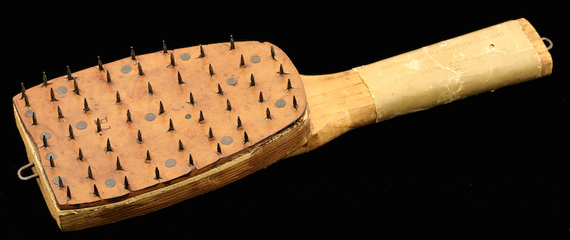Founded in 1846 with a $500,000 bequest, the Smithsonian Institution in Washington, D.C., is the largest museum complex in the world. Each year, millions of visitors flock to the 17 museums and galleries in the nation's capital. On their list? Famous artifacts such as the Hope Diamond and Dorothy's ruby red slippers. But beyond the major displays, surprises await. Lesser-known objects--a cellphone-shaped coffin anyone?--have equally fascinating histories and shouldn't be missed.
Fittingly, Smithsonian founder James Smithson has an intriguing story himself. The British scientist was born the illegitimate son of a wealthy Englishman and never set foot in America. Yet, he chose this country to benefit from his legacy. We'll never know why; Smithson took his reasons with him to the crypt--which, naturally, is on view in The Castle building.
From a painting that doesn't exist to a mini dwelling of imaginary people, these objects round out the Smithsonian's vast collection. Consider adding them to your "must-see" list.
The Surprise: "Sky Baby"
What It Is: On a dare in the 1950s, pilot Ray Stits built what was at the time the world's smallest piloted airplane. Sky Baby, with a wingspan of 7 feet, 2 inches and measuring 9 feet, 10 inches long and just 5 feet tall, took to the air in 1952 with Robert H. Starr in the tiny cockpit.
Find It: National Air & Space Museum's Udvar-Hazy Center, Chantilly, Va.
----
"Speculative Forms: Charles Simonds, Rock Flower," 1986. Hirshhorn Museum and Sculpture Garden, Smithsonian Institution, Washington DC. ©2014 Charles Simonds/Artists Rights Society (ARS), New York. (Courtesy Lee Stalsworth)
The Surprise: "Rock Flower"
What It Is: Since 1970, artist Charles Simonds has been traveling the world, building tiny communities of imagined "little people" onto window ledges and into sections of brick wall and crumbling curbs. Resembling ancient villages, these hyper-detailed dwellings (standalone "Rock Flower" on view) in various stages of completion illustrate the struggle to survive modern life in big cities, including New York, London and Shanghai.
Find It: Hirshhorn Museum & Sculpture Garden, Washington, D.C.
----
The Surprise: "Nokia Cell Phone Coffin"
What It Is: You can't take it with you, but many Ghanaians in the 1950s chose to be buried in coffins resembling what they loved in life, a trend popularized then by artist Kane Kwei. Samuel Nartey's cell phone-shaped coffin, built for a 2008 exhibition, references this unusual custom and acknowledges modern Ghanaians' preoccupation with mobile phones.
Find It: National Museum of African Art, Washington, D.C.
The Surprise: "Perforating Press"
What It Is: A Medieval hairbrush for prisoners? Not quite. This 1899 nail-studded paddle was actually used as an instrument of good public health, not to torture 15th-century criminals. The Montgomery, Alabama, Board of Health used the tool to perforate letters before spraying them with sulfur fumes, thereby protecting against yellow fever.
Find It: National Postal Museum
----
James Hampton ca. 1950-1964. Gold and silver aluminum foil, Kraft paper and plastic over wood furniture, paperboard and glass. 180 pieces in overall configuration: 10 1/2 x 27 x 14 1/2 ft. Smithsonian American Art Museum. Gift of anonymous donors.
The Surprise: "The Throne of the Third Heaven of the Nations' Millennium General Assembly" What It Is: As he awaited the return of Jesus Christ to earth, James Hampton labored to build an intricate large-scale chancel inside a rented garage. For 14 years right up to his death in 1964, Hampton meticulously built an altar, throne, offertory tables and pulpits with found objects like old furniture, mirror fragments and discarded light bulbs. In all, 180 objects decorated in foil and brilliant purple paper make up the display--only a fraction of which is on view at the American Art Museum. Hampton also kept notebooks filled with a secret writing system that may never be deciphered. Hampton's creation may not have achieved its intended purpose, but the religious construction is considered to be the greatest work of visionary art in America.
Find It: Smithsonian American Art Museum
----
James McNeill Whistler "Woman with Parasol," 1870-73. Black and white chalk on brown paper, 18.3 x 13 cm. Freer Gallery of Art, Gift of Charles Lang Freer, F1905.138
The Surprise: "Lost Symphony"
What It Is: Visitors might know James McNeill Whistler's gilded Peacock Room at the Freer gallery (currently closed for renovation). But few know the artist's "The Three Girls," because it doesn't exist. The painting would have hung in the Peacock Room, but an argument between Whistler and his patron Frederick Leyland caused the painter to destroy his work in progress. This exhibition displays all that remains: a fragment, sketched studies and the decorated frame, hinting at how much the relationship between artist and patron had deteriorated over issues like money.
Find It: Arthur M. Sackler Gallery
Author Anne Kim-Dannibale serves as the Washington, D.C., senior editor for Where.

